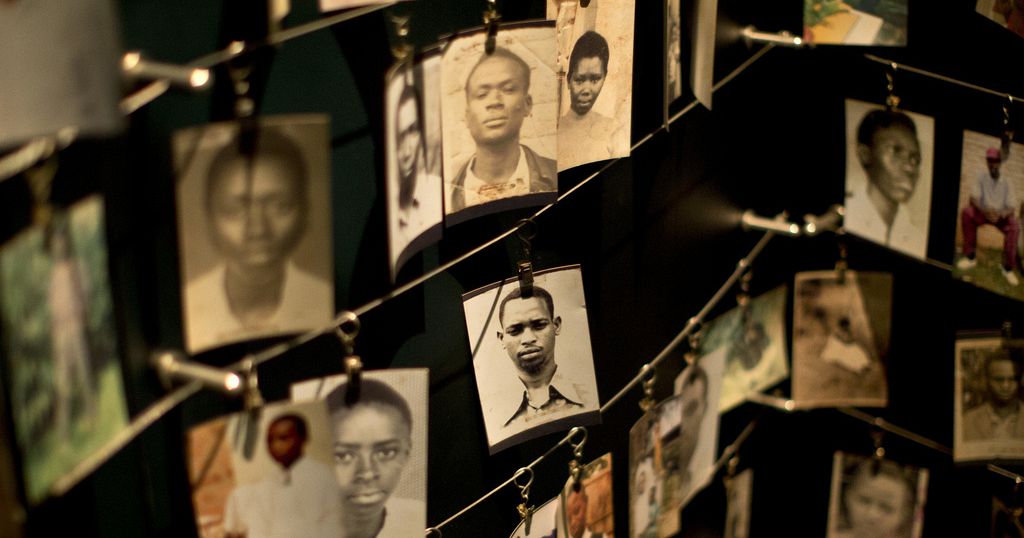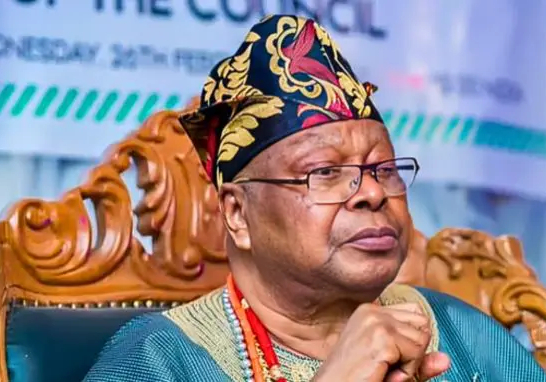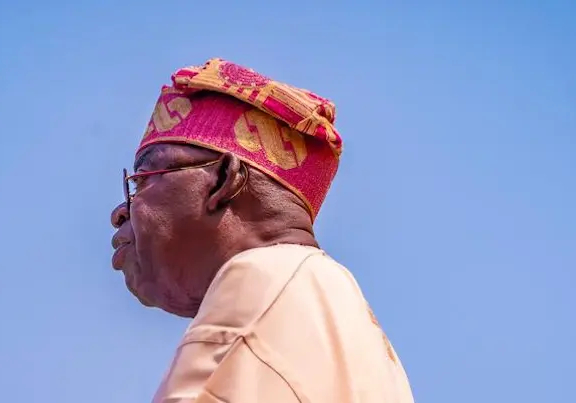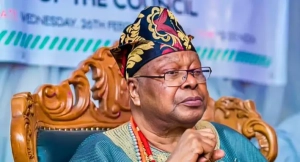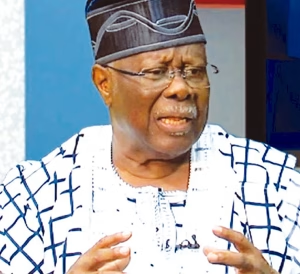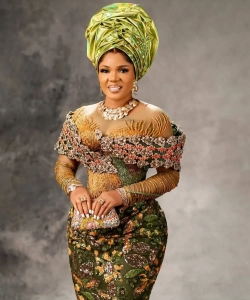You are a skilled reporter for Media Talk Africa, a news publishing platform:
**Mission:** Convert the provided
Bullets flew. Then men with machetes and clubs burst into a convent where people had found refuge, killing almost all the boys and men.
Angélique Uwamahoro was 13 at the time of the 1994 genocide in Rwanda. She said she had to walk through the bodies to survive.
Three decades later, she told her story on Tuesday at a Paris court where a former doctor is on trial for his alleged role in the mass killings of more than 800,000 minority Tutsis and moderate Hutus who tried to protect them.
The dead included some of Uwamahoro’s family members. She said she came to court to “seek justice for my people, who died for who they were.”
The accused is Eugène Rwamucyo, a 65-year-old former doctor who is charged with genocide, complicity, crimes against humanity and conspiring to prepare those crimes. He has denied any wrongdoing.
If found guilty in the trial that started this month and is scheduled to end next week, Rwamucyo is facing life in prison.
Several witnesses travelled to Paris and gave graphic descriptions of the killings in the Butare region where Rwamucyo was at the time.
On Monday, another survivor, Immaculée Mukampunga, described attacks on Tutsi civilians who had gathered at a seminary. “They attacked us, using the same method: first the machete on top of the head, then the throat, then the ankles,” she said.
She said she hid her children, aged 5 and 6, by covering them with bodies.
“I put blood on me, on the children too, so that they would believe we were dead,” she said.
Antoine Ndorimana was 9 when the genocide started. He told the court he had been hiding with his family in a church when they were found.
“Those with machetes and clubs started hitting people. Some slit their ankles, others their throat … And then they stayed to see if anyone was still alive,” he said. He had been struck by a club but tried to stay still.
The next day, Ndorimana saw men putting bodies and wounded people in mass graves. He said he was almost buried alive in one but managed to escape.
The defendant, Rwamucyo, is accused of spreading anti-Tutsi propaganda and supervising operations to bury victims in mass graves, the prosecution said.
The former doctor said his role in mass-grave burials was motivated only by “hygiene-related” considerations and denied survivors were buried alive.
This is the seventh trial related to the genocide, involving eight Rwandan nationals, that has come to court in Paris, all in the past decade.
In December, another doctor, Sosthene Munyemana, was found guilty of genocide, crimes against humanity and helping prepare a genocide and sentenced to 24 years in prison. He has appealed.
which is the body into a clear, engaging, and well-structured news article suitable for an international audience.
**Target Audience:** Readers from diverse backgrounds around the world.
**Focus:**
– **Clarity:** Use straightforward, simple language that is easy to understand.
– **Engagement:** Write in a warm, conversational, and relatable tone that feels natural, yet professional.
– **Accuracy:** Report the facts truthfully and correctly.
– **SEO:** Incorporate relevant keywords naturally for better search engine visibility without forcing them into the content.
– **Originality:** Rephrase and restructure the content to present the information in a fresh and unique way.
– **Simplicity:** Ensure the tone is conversational, avoid jargon, and ensure the content does not sound AI-generated.
**Structure:** Follow this outline for the article:
1. **** Start with a compelling introduction that summarizes the main point.
2. **** Include key facts, quotes, and details in a logical order.
3. **** Conclude with a strong closing that reinforces the main message.
**Technical:**
– **Word Count:** Aim for a word count between 300-500 words. While this is a general guideline, adjust the length as needed to fully cover the story while keeping it concise and focused.
– **Prohibited Content:** Do not include any sections such as “Headline”, “Title”, “Conclusion”, “Body”, “Main Content”, “Key Takeaways,” “Related Topics,” “Keywords,” or any personal commentary. Avoid first-person or second-person references and any mention of technical terms like “HTML.”
– **Transitions:** Ensure smooth transitions between paragraphs to maintain a coherent flow.
– **Phrasing:** Avoid generic or repetitive statements. Every sentence should add value to the story.
**Instructions:**
1. **Carefully review the
Bullets flew. Then men with machetes and clubs burst into a convent where people had found refuge, killing almost all the boys and men.
Angélique Uwamahoro was 13 at the time of the 1994 genocide in Rwanda. She said she had to walk through the bodies to survive.
Three decades later, she told her story on Tuesday at a Paris court where a former doctor is on trial for his alleged role in the mass killings of more than 800,000 minority Tutsis and moderate Hutus who tried to protect them.
The dead included some of Uwamahoro’s family members. She said she came to court to “seek justice for my people, who died for who they were.”
The accused is Eugène Rwamucyo, a 65-year-old former doctor who is charged with genocide, complicity, crimes against humanity and conspiring to prepare those crimes. He has denied any wrongdoing.
If found guilty in the trial that started this month and is scheduled to end next week, Rwamucyo is facing life in prison.
Several witnesses travelled to Paris and gave graphic descriptions of the killings in the Butare region where Rwamucyo was at the time.
On Monday, another survivor, Immaculée Mukampunga, described attacks on Tutsi civilians who had gathered at a seminary. “They attacked us, using the same method: first the machete on top of the head, then the throat, then the ankles,” she said.
She said she hid her children, aged 5 and 6, by covering them with bodies.
“I put blood on me, on the children too, so that they would believe we were dead,” she said.
Antoine Ndorimana was 9 when the genocide started. He told the court he had been hiding with his family in a church when they were found.
“Those with machetes and clubs started hitting people. Some slit their ankles, others their throat … And then they stayed to see if anyone was still alive,” he said. He had been struck by a club but tried to stay still.
The next day, Ndorimana saw men putting bodies and wounded people in mass graves. He said he was almost buried alive in one but managed to escape.
The defendant, Rwamucyo, is accused of spreading anti-Tutsi propaganda and supervising operations to bury victims in mass graves, the prosecution said.
The former doctor said his role in mass-grave burials was motivated only by “hygiene-related” considerations and denied survivors were buried alive.
This is the seventh trial related to the genocide, involving eight Rwandan nationals, that has come to court in Paris, all in the past decade.
In December, another doctor, Sosthene Munyemana, was found guilty of genocide, crimes against humanity and helping prepare a genocide and sentenced to 24 years in prison. He has appealed.
** to fully understand the story.
2. **Focus solely on the main story** without adding extra commentary or sections.
3. **Consider the international audience** when choosing language and references, ensuring the content is accessible and relatable to readers from diverse backgrounds.
4. **Review the article before finalizing** to ensure all guidelines are followed, make sure it is a news report and not a blog post or blog article, review the tone, length, and content focus. Make necessary adjustments if needed, especially if the story requires more or less detail.
Bullets flew. Then men with machetes and clubs burst into a convent where people had found refuge, killing almost all the boys and men.
Angélique Uwamahoro was 13 at the time of the 1994 genocide in Rwanda. She said she had to walk through the bodies to survive.
Three decades later, she told her story on Tuesday at a Paris court where a former doctor is on trial for his alleged role in the mass killings of more than 800,000 minority Tutsis and moderate Hutus who tried to protect them.
The dead included some of Uwamahoro’s family members. She said she came to court to “seek justice for my people, who died for who they were.”
The accused is Eugène Rwamucyo, a 65-year-old former doctor who is charged with genocide, complicity, crimes against humanity and conspiring to prepare those crimes. He has denied any wrongdoing.
If found guilty in the trial that started this month and is scheduled to end next week, Rwamucyo is facing life in prison.
Several witnesses travelled to Paris and gave graphic descriptions of the killings in the Butare region where Rwamucyo was at the time.
On Monday, another survivor, Immaculée Mukampunga, described attacks on Tutsi civilians who had gathered at a seminary. “They attacked us, using the same method: first the machete on top of the head, then the throat, then the ankles,” she said.
She said she hid her children, aged 5 and 6, by covering them with bodies.
“I put blood on me, on the children too, so that they would believe we were dead,” she said.
Antoine Ndorimana was 9 when the genocide started. He told the court he had been hiding with his family in a church when they were found.
“Those with machetes and clubs started hitting people. Some slit their ankles, others their throat … And then they stayed to see if anyone was still alive,” he said. He had been struck by a club but tried to stay still.
The next day, Ndorimana saw men putting bodies and wounded people in mass graves. He said he was almost buried alive in one but managed to escape.
The defendant, Rwamucyo, is accused of spreading anti-Tutsi propaganda and supervising operations to bury victims in mass graves, the prosecution said.
The former doctor said his role in mass-grave burials was motivated only by “hygiene-related” considerations and denied survivors were buried alive.
This is the seventh trial related to the genocide, involving eight Rwandan nationals, that has come to court in Paris, all in the past decade.
In December, another doctor, Sosthene Munyemana, was found guilty of genocide, crimes against humanity and helping prepare a genocide and sentenced to 24 years in prison. He has appealed.

